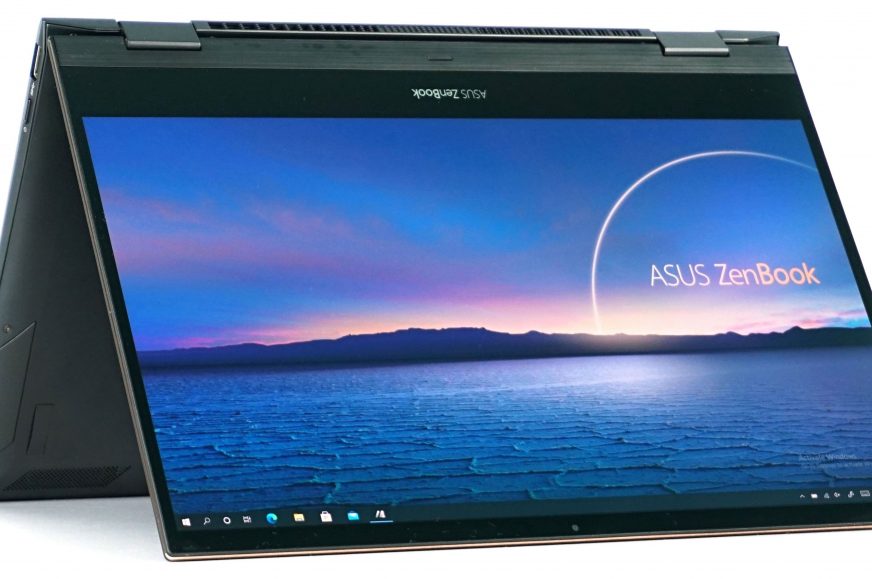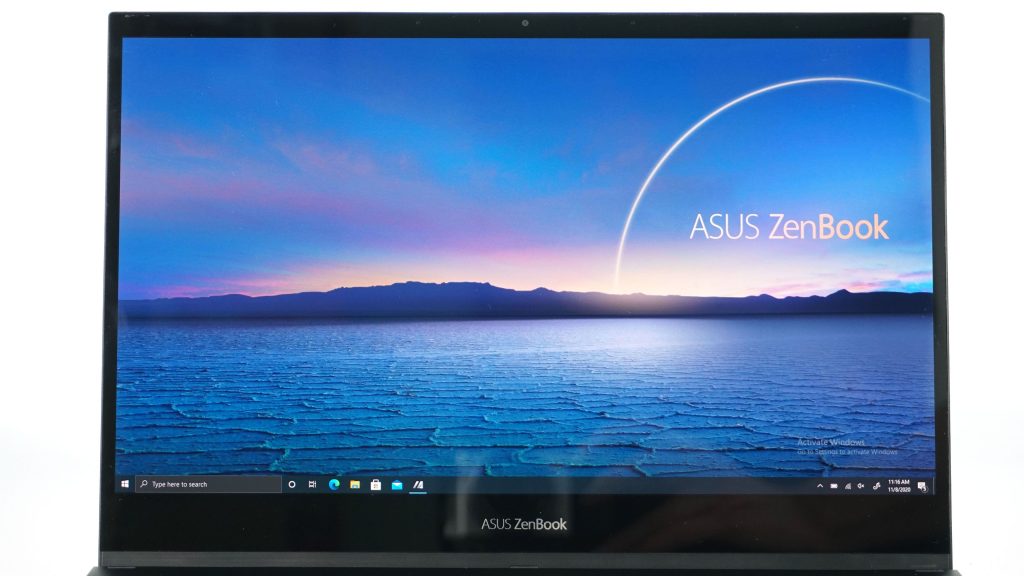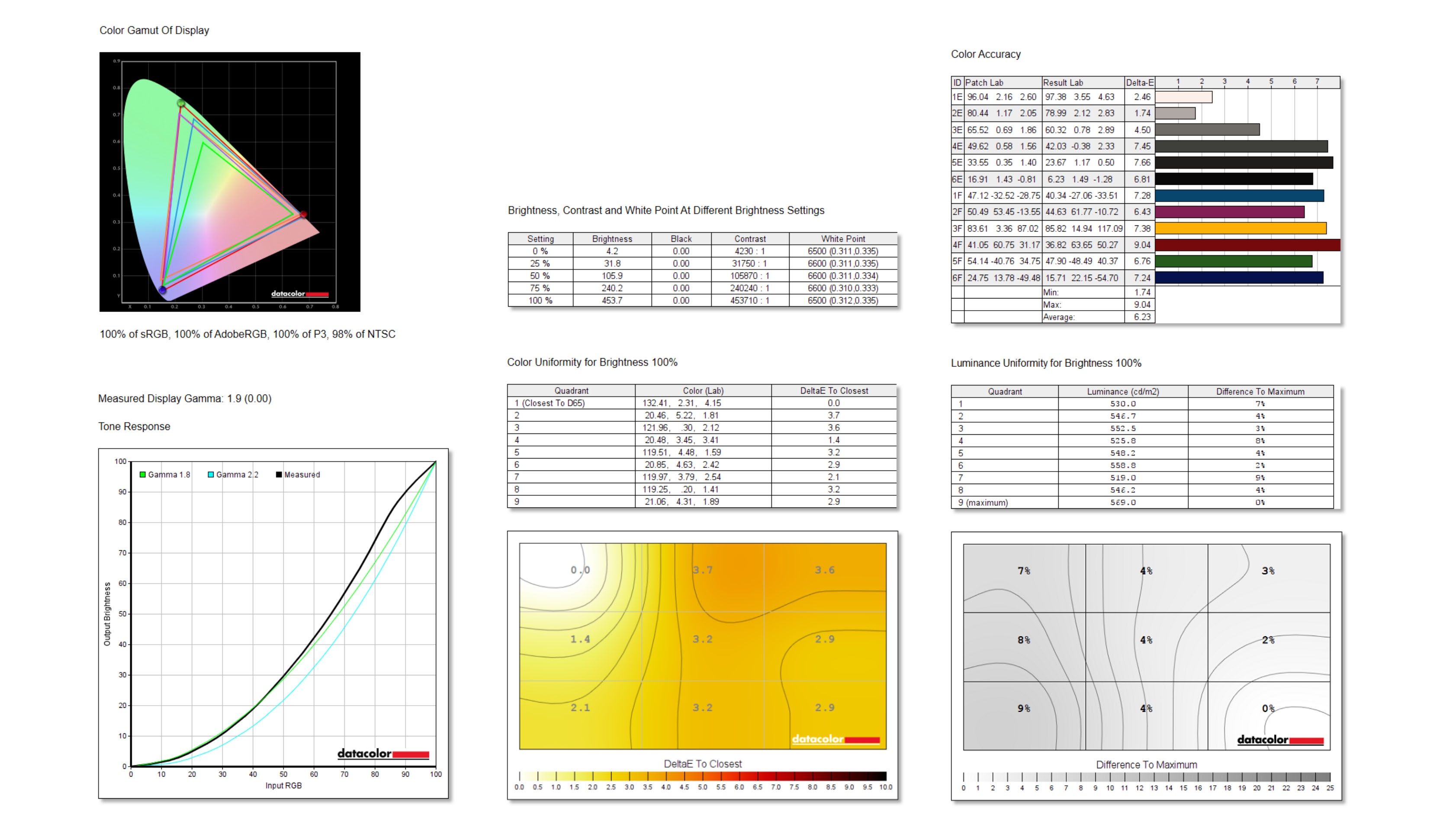Display tests
This year is packed with technological innovations and laptops are an area where it’s all happening. In addition, Intel is under a lot of pressure, which was reflected in the relatively fast release of the new gen of Tiger Lake processors, and the first novelty from Asus has already reached our editorial office. What is the new ZenBook Flip S like and is the 11th gen of Intel Core even sensible compared to the 10th gen in the recently tested ZenBook 14?
Gamut, brightness and color difference
We measured the image properties of the display using the Datacolor Spyder5Elite color analyzer. The Flip S offers a unique display, which is not is not in many laptops yet. 13.3″ screen with 4K resolution in aspect ratio of 16:9 (3840 × 2160 px) and 60 Hz impresses with touch and stylus support, but especially with OLED technology. Unlike classic IPS, VA, TN panels, it does not need backlighting, as every single pixel emits its own light. That means no backlight bleed, endless contrast and true black color. I myself am curious what values we’ll measure with the color analyzer. It is also important to mention that the touch layer can recognize up to 4096 levels of pressure when drawing with a stylus, whose battery lasts up to 12 months. However, the stylus is sold separately and we did not have it available for testing.
On the manufacturer’s website you will find information about 80% display to body ratio, 400 nit brightness, but also 100% coverage of DCI-P3, Pantone Validated certificate and VESA DisplayHDR 500 True Black. The specs are truly interesting and unlike other laptops or monitors that we normally test, the HDR of the OLED display really matters and I will definitely test it.
The display offers excellent color reproduction with over 100% coverage of sRGB, Adobe RGB and DCI-P3 and 98% NTSC. The maximum brightness with a value of 453 nits is also excellent, which is one of the best measured values so far. The uniformity is good, with only slight deviations in color and backlight. Slightly strange is the course of gamma, with a curve similar to 1.8 value, but with a different bend at the top. Due to the high coverage of all gamuts, we see a relatively large color difference of Delta E. Calibration of the display for the desired use would probably be needed. In its default state, it is really saturated and vivid, which is very good for content consumption. I also tried HDR content, whether played locally or played online. Everything works as desired and the image is really breathtaking, as is the custom with OLEDs.
- Contents
- Specs and details
- Testing methodology
- Display tests
- Rendering and Geekbench
- 3D/PCMark and Unigine Heaven/Superposition
- Gaming tests – integrated graphics
- Encryption, encoding
- Memory and storage tests
- Heating and battery life
- Clock, power draw and temperature analysis
- Utility app
- Rating













very clear and good article easy to understand. Thank you